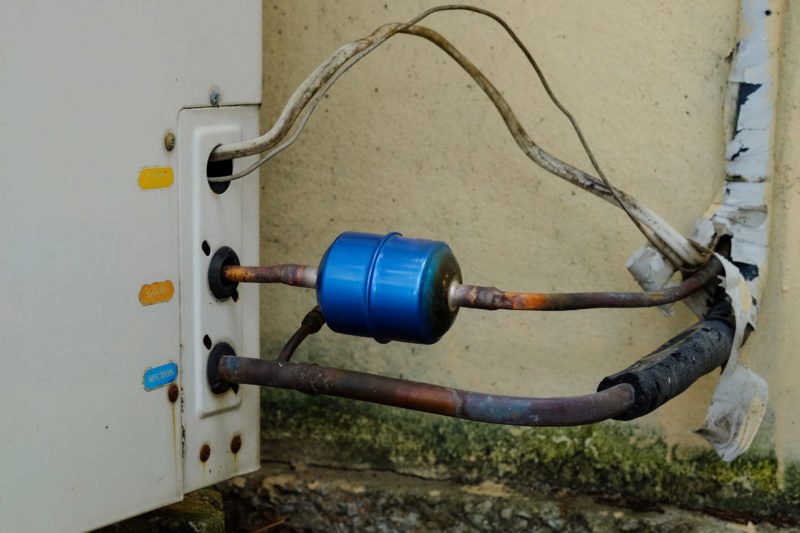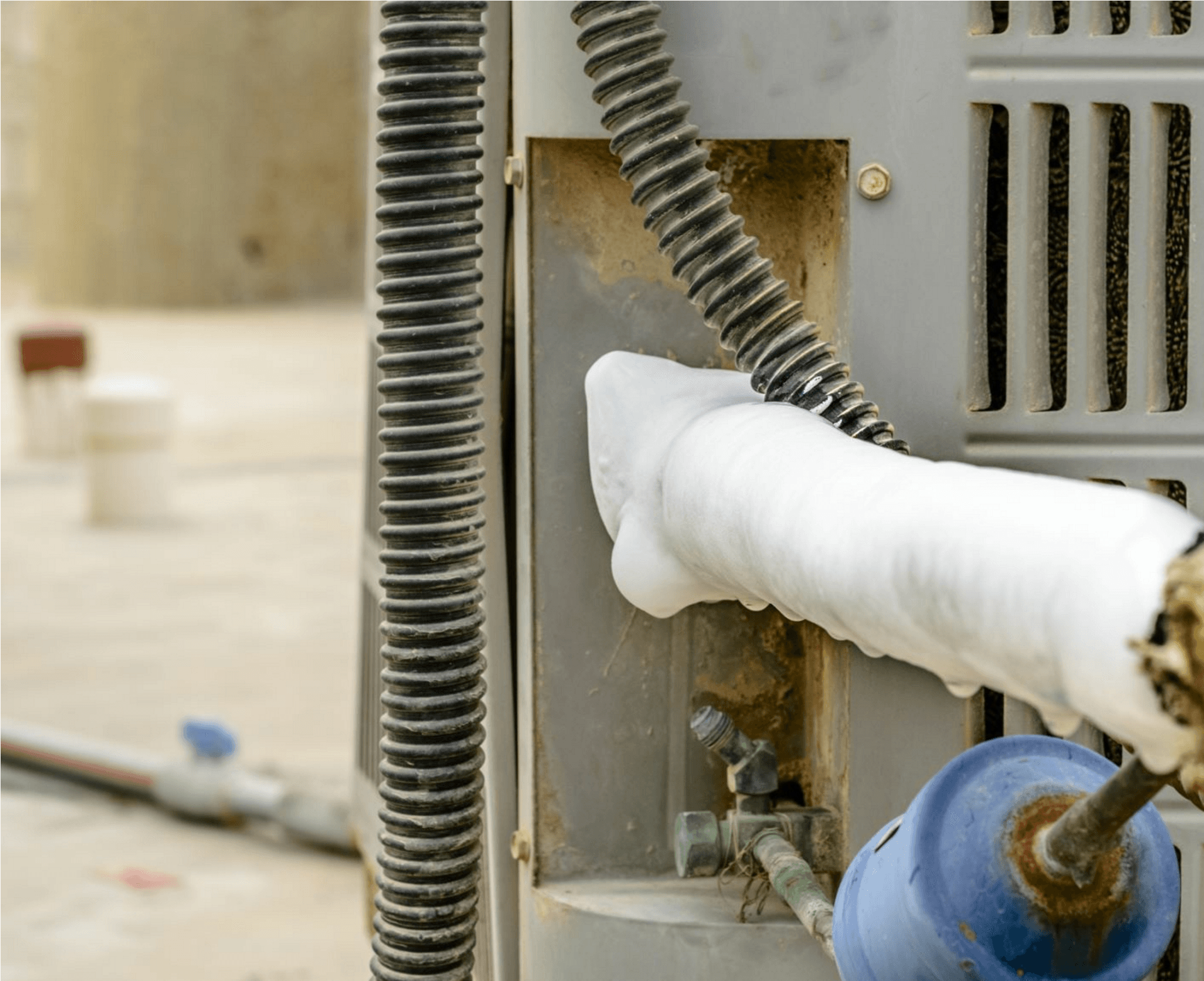Frozen AC Pipe - Identifying and Resolving the Issue Promptly
Frozen AC Pipe - Identifying and Resolving the Issue Promptly
Blog Article
What are your opinions regarding What Do I Do If My AC Pipe Is Frozen?

Intro
Discovering that your a/c pipeline is frozen can be worrying, particularly throughout hot summer months when you depend on your ac system one of the most. Understanding what to do in such a circumstance is critical to avoid more damage to your cooling system and guarantee your convenience inside your home.
Recognizing the Causes
Several elements can add to the cold of an a/c pipeline. Understanding these causes can aid you address the problem efficiently.
Absence of Airflow
One usual source of a frozen AC pipe is inadequate air flow. When the air flow over the evaporator coil is limited, it can create the coil to go down below freezing temperature, resulting in ice development on the pipeline.
Reduced Refrigerant Levels
Insufficient refrigerant levels in your air conditioning system can likewise lead to an icy pipeline. Reduced cooling agent degrees can create the pressure in the system to go down, leading to the freezing of moisture on the evaporator coil.
Cold Weather Conditions
In colder climates, freezing temperatures outside can add to the cold of air conditioner pipelines. If your air conditioner device is not effectively shielded or if there are leakages in the ductwork, chilly air can penetrate the system, triggering the pipe to freeze.
Dirty Air Filters
Dirty or clogged air filters can restrict air flow in your air conditioning system, resulting in various issues, including an icy pipeline. It's important to change or clean your air filters routinely to make sure appropriate air flow and avoid ice buildup.
Indicators of a Frozen Air Conditioner Pipe
Identifying the indications of a frozen AC pipeline is vital for punctual action.
Decreased Airflow
If you notice a substantial reduction in air flow from your vents, it could show a frozen pipe.
Ice Buildup on the Pipe
Noticeable ice build-up on the cooling agent line or the evaporator coil is a clear indication of an icy a/c pipe.
Weird Sounds from the Unit
Uncommon sounds, such as hissing or gurgling, coming from your AC device can signify that there's ice present on the pipeline.
Immediate Actions to Take
When faced with a frozen a/c pipeline, it's necessary to act promptly to avoid more damage to your air conditioning system.
Switching off the AC
The first step is to turn off your air conditioning system to stop the system from running and aggravating the concern.
Looking for Blockages
Check the area around the indoor unit for any kind of blockages that may be blocking air movement, such as furnishings or curtains.
Thawing the Pipe
You can make use of gentle methods like positioning towels soaked in warm water around the icy pipe to aid thaw it gradually.
Safety nets
Taking preventive measures can assist prevent future events of an icy AC pipe.
When DIY Methods Fail
If your efforts to thaw the pipeline or address other problems are not successful, it's time to contact a specialist.
Importance of Hiring a Professional HVAC Technician
A licensed HVAC technician has the competence and devices necessary to identify and fix issues with your air conditioning system securely and properly.
Regular Maintenance Checks
Arrange normal maintenance contact a specialist HVAC service technician to make sure that your air conditioner system is running efficiently.
Altering Air Filters
Regularly replace or clean your air filters to stop airflow restrictions and preserve ideal efficiency.
Protecting Exposed Pipes
If your a/c pipelines are exposed to chilly temperature levels, take into consideration insulating them to avoid cold throughout winter months.
Seeking Professional Help
If DIY techniques stop working to settle the concern or if you're unclear about how to proceed, it's ideal to look for aid from a certified HVAC technician.
Conclusion
Handling a frozen air conditioning pipe can be an irritating experience, yet recognizing just how to react can assist reduce damage and recover convenience to your home. By comprehending the causes, acknowledging the signs, and taking prompt activity, you can properly attend to the problem and avoid future occurrences.
Frozen AC Line: Why It Happens & What To Do About It
A frozen AC line can be a rather peculiar sight in a place like Phoenix, Arizona where nothing ever freezes. In this post, we’ll discuss what makes an air conditioner line frozen – and what you can do about it.
Dirty Air Filters
Did you know that you should be cleaning or replacing your air filters on a monthly basis? Failing to do this can result in airflow issues that, in turn, cause your evaporator coils and lines to freeze over. You’ll notice a buildup of ice on both components, although the buildup on your pipes will, of course, be more evident unless you open your air condition up to reveal the coils.
What To Do About It
Give your air filter a good cleaning if it’s reusable. If not, replace the filter outright. Next, switch your air conditioner’s fan setting on and leave it there for 2-3 hours. This will draw warm air in, helping to thaw your evaporator coil. You can also check out this article for some tips on cleaning the coils themselves if you’d like to speed the process up. Before you switch the unit back to its normal state, make sure the supply vents are completely unobstructed and free of dust or other debris.
If you keep having this issue even after replacing your filters regularly, contact a local HVAC repair company and have them inspect your evaporator coil, ductwork, and any other components that may be at fault. If you live in the Phoenix, Arizona area, give American Home Water and Air a call.
Low Refrigerant Levels/Leakage
What To Do About It
Contrary to what air conditioner “recharge” companies often tell their clients about refrigerant, it should never need to be simply refilled. You see, refrigerant runs in what experts refer to as a “closed loop.” Refrigerant really shouldn’t be leaving that loop. If it is, you’ve got a leak.
Paying someone to come and pump more refrigerant into your system (aka “recharge” it) isn’t the solution. Doing that will simply kick the can down the road. Besides, refrigerant leaks can be harmful to the environment and people in your home.
Rather, you need to take care of the leak with the help of a technician. Check out this article for some more information about dealing with air conditioners that are leaking refrigerant. Before you contact a technician, switch your thermostat to the off position. Then, switch the fan setting on and let it run for 2-3 hours so the unit can thaw.
Improper Temperature Setting
Improper temperature settings can also cause a drop in your air conditioner’s pressure. What many people don’t realize is that air conditioners are actually designed to run when temperatures have fallen above roughly 60 degrees Fahrenheit. If you run the unit when it’s cold outside, you’ll run into many issues, including frozen components.

I was made aware of that report about Have a Frozen AC Line? Here’s How to Fix It from a friend on our other domain. Don't hesitate to set aside a second to promote this content if you liked it. Thanks so much for taking the time to read it.
Book A Free Estimate Report this page